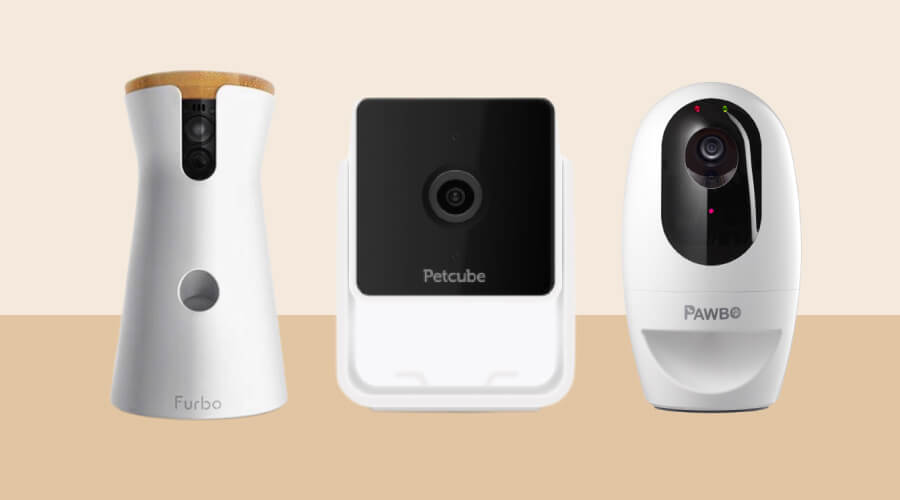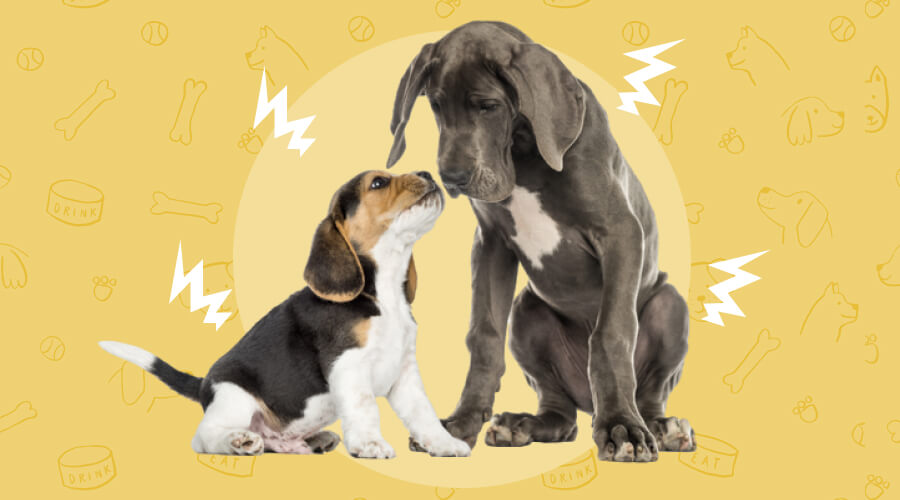Are you tired of feeling overwhelmed by the endless options of dog food at the pet store? Are you unsure about the differences between kibble, raw, and cooked diets? Have you just welcomed a new bundle of furry joy to your home and are wondering what’s the healthiest option for your new pal? Well, you’ve come to the right place! In this beginner’s guide, we’ll be breaking down the pros and cons of each type of diet, so you can make an informed decision on what to feed your furry friend.
We will also be providing some recommendations on how to choose the highest-quality kibble, raw or cooked food so you can rest easy knowing your pup is being fed only the best of the best. So grab a bowl of kibble (or maybe a piece of raw meat?) and let’s eat.
Kibble, Raw & Cooked – What’s the Difference?

Let’s quickly break down the difference between kibble, cooked and raw food for dogs.
- Kibble, also known as dry food, is a type of dog food that is made by cooking a mixture of ingredients at high temperatures and then shaping them into small pieces or pellets. This type of food is convenient and easy to store because it doesn’t need refrigeration. Kibble is also easy to portion out and can be left out for dogs to eat throughout the day.
- Raw diets, also known as BARF (Biologically Appropriate Raw Food) diets, consist of raw meat, fruits, and vegetables. This type of diet aims to mimic the diet of wild dogs and is believed to provide more natural and complete nutrition.
- Cooked diets are made by cooking a mixture of ingredients, similar to kibble, but the ingredients are often of higher quality than those used in kibble. These diets can be made at home or purchased pre-made and are often tailored to meet the specific needs of individual dogs.
Kibble Pros & Cons

Kibble is one of the most common ways to feed your dog because it’s convenient, cost-effective and meets most of the nutritional needs of your dog.
Kibble Pros
- Convenient: Kibble is easy to store and can be left out for dogs to eat throughout the day, making it a great option for busy pet parents.
- Variety: Kibble comes in a wide variety of flavours and brands, so you’re sure to find something your pup will love.
- Long shelf-life: Kibble has a long shelf life, so you don’t have to worry about it going bad before you finish the bag.
- Affordable: Kibble is generally less expensive than other types of dog food.
Kibble Cons
- Processed: Kibble is highly processed, which means that some of the nutrients from the original ingredients may be lost during the production process.
- Can be high in carbohydrates: Some kibble brands can be high in carbohydrates, which can lead to weight gain and other health issues if not balanced with protein and fat.
- May contain fillers: Some kibble brands may contain fillers such as corn, wheat, and soy which can be hard to digest for some dogs.
- May not be as nutritionally complete as a raw or home-cooked diet.
Overall, kibble can be a great option for some dogs, but it’s important to read the ingredient list and do research on the brand before making a purchase.
Recommendations for Choosing High-Quality Kibble
When choosing kibble, it’s important to select a high-quality product that meets your dog’s specific nutritional needs. Here are a few recommendations to keep in mind:
- Look at the ingredients: The first ingredient listed should be a high-quality protein source such as chicken, fish, or lamb. Avoid kibble that lists corn, wheat, or soy as the first ingredient.
- Check the protein and fat content: Make sure the kibble you choose has a high protein and fat content to support your dog’s muscle development and energy levels.
- Avoid artificial preservatives, colours, and flavours: These can be harmful to your dog’s health and should be avoided.
- Research the brand: Look for brands that use high-quality ingredients and have a good reputation. Consider reading reviews from other pet owners, or consulting with a veterinarian for recommendations.
- Tailor to your dog’s specific needs: Not all kibble is created equal, so it’s important to choose a kibble that is formulated to meet your dog’s specific needs. For example, if your dog is a senior, you’ll want to look for a kibble that is formulated for older dogs.
- Be aware of the price: High-quality kibble may be more expensive than lower-quality options, but it’s important to remember that you get what you pay for. Investing in a high-quality kibble can help ensure that your dog is getting the nutrition they need to thrive.
Raw Food Pros & Cons

While less common, feeding your dog a raw food diet is certainly growing in popularity thanks to the incredible benefits it can offer your dog, including improving their lifespan.
Raw Food Pros
- Closer to a natural diet: A raw diet aims to mimic the diet of wild dogs, and is believed to provide more natural and complete nutrition.
- Higher in protein: Raw diets are often higher in protein than kibble or cooked diets, which can support muscle development and repair.
- Less processed: Since raw food is not cooked, it retains more of its natural enzymes and nutrients.
Raw Food Cons
- Handling and storage: Raw diets require careful handling and storage to avoid bacterial contamination.
- Can be expensive: Raw food can be more expensive than kibble or cooked diets due to the cost of the ingredients and the need for careful handling.
- Requires more preparation: Preparing a raw diet for your dog takes more time and effort than simply scooping kibble out of a bag.
Overall, feeding your dog a raw food diet has an incredible number of benefits, but you need to make sure you’re not over-feeding your dog, and that the food you’re preparing meets all of their nutritional needs.
Recommendations for Raw Food Feeding
When feeding your dog a raw food diet, it’s important to take proper precautions to ensure that the food is safe for your dog to eat. Here are a few tips to keep in mind:
- Consult with a veterinarian: Before starting your dog on a raw diet, it’s a good idea to consult with a veterinarian to ensure that the diet is appropriate for your dog’s specific needs and health conditions.
- Handle the raw food carefully: Raw meat can contain harmful bacteria, so it’s important to handle it with care. Always wash your hands before and after handling raw food, and avoid cross-contamination by using separate cutting boards, utensils, and storage containers for raw food.
- Store the raw food properly: Raw food should be stored in the refrigerator or freezer to prevent bacterial growth.
- Transition gradually: If you are switching your dog to a raw diet, it’s best to do so gradually to give their digestive system time to adjust.
- Balance the diet: A balanced raw diet should include a variety of meats, fruits, and vegetables, and should be formulated to meet your dog’s specific nutritional needs.
- Keep track of any changes: Keep an eye on your dog’s health and well-being. If you notice any changes such as diarrhoea, vomiting, or weight loss, it’s important to consult with a veterinarian as soon as possible.
Cooked Food Pros & Cons

A cooked food diet can often be the best of both worlds: it’s more convenient than raw food but offers similar nutritional benefits. Here are some additional pros, and some cons to be aware of.
Cooked Food Pros
- Tailored to your dog’s specific needs: A cooked diet can be tailored to meet your dog’s specific nutritional needs, such as allergies or medical conditions.
- Can be made with high-quality ingredients: With a cooked diet, you have control over the ingredients used, so you can choose high-quality, whole ingredients.
- More nutrients retained: Cooking can help retain more of the nutrients in the food compared to highly processed kibble.
Cooked Food Cons
- Time-consuming: Preparing a cooked diet for your dog takes more time and effort than simply scooping kibble out of a bag or defrosting a raw diet.
- Can be expensive: Depending on the ingredients used, a cooked diet can be more expensive than kibble or raw diets.
- Requires careful storage: Cooked food needs to be refrigerated or frozen and should be consumed within a few days, unlike kibble which has a longer shelf-life.
Recommendations for Choosing High-Quality Cooked Food
You can either buy cooked dog food from a reputable dog food brand, or you can cook your own. Here are some recommendations to make sure your dog is getting the quality food they deserve:
- Consult with a veterinarian: Like with raw food, it’s important to consult with a veterinarian to ensure that the diet is appropriate for your dog’s specific needs and health condition.
- Check the ingredients: Look for a variety of ingredients including meats, fruits, and vegetables. Avoid cooked food that contains fillers such as grains or starches.
- Look for human-grade ingredients: Human-grade ingredients are held to a higher standard of quality than those meant for animal consumption.
- Tailor to your dog’s specific needs: Not all cooked food is created equal, so it’s important to choose a cooked food that is formulated to meet your dog’s specific needs. For example, if your dog has a sensitivity to grains, you’ll need to find a cooked food brand free of grains.
- Be mindful of cost: High-quality cooked food may be more expensive than lower-quality options, but it’s important to remember that you get what you pay for. Investing in high-quality cooked food can help ensure that your dog is getting the nutrition they need to thrive.
- Read the label: Be sure to read the label and check for the macronutrients (proteins, fats, and carbohydrates) and micronutrients (vitamins and minerals) to make sure the food contains the correct balance of nutrition for your dog.
Conclusion
Well, there you have it! We’ve covered the basics of kibble, raw, and cooked diets for dogs and the pros and cons of each. It’s important to remember that each type of diet has its own set of benefits and drawbacks and what works for one dog may not work for another.
It’s always a good idea to consult with a veterinarian before making a decision on what type of diet to feed your dog and ensure that the diet provides all the necessary nutrients for your dog’s health and well-being.
In the end, the most important thing is to choose a diet that is safe and nutritious for your dog, and that you are comfortable handling and providing. With the right diet, your furry friend will be happy and healthy for years to come.
Dog Food FAQs
Can I Feed My Puppy Raw Food?
It is possible to feed a puppy a raw food diet, but it is important to consult with a veterinarian before doing so. Raw food can be a good option for puppies, as it is high in protein and can support their growth and development. However, it is important to ensure that the diet is balanced and provides all the necessary nutrients for a growing puppy.
What Foods Are Poisonous to Dogs?
There are several common foods that are toxic and poisonous to dogs Some of the most dangerous foods for dogs include: chocolate, grapes, onions, garlic, avocados, xylitol, coffee, fatty foods and cooked bones.
What Vegetables Can My Dog Eat?
There are many dog-friendly vegetables! Some dog-friendly vegetables that can provide various health benefits to your pup include kale, spinach, carrots, green beans, broccoli, beets, celery, and cucumber.
Can Dogs Eat Raw Meat?
Dogs can eat raw meat as part of a raw food diet, but it’s important to handle and store the meat properly to avoid bacterial contamination. Raw meat can contain harmful bacteria such as Salmonella and E.coli, which can make both dogs and humans sick. It is important to make sure that the meat is sourced from reputable suppliers and handled in a safe and hygienic manner.



